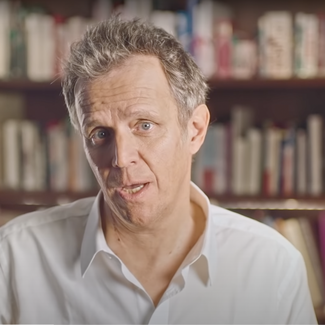
The Conversation
The rise of the vulnerable leader
Strong leadership comes from choosing vulnerability and authenticity
08 April 2022
Arthur Sadoun, the chief of Publicis Groupe, has revealed he’s just had surgery for cancer.
Sadoun has recorded a video message for his staff speaking candidly about his treatment, revealing a scar on his neck from the removal of cancerous cells and talking about the distress he’s suffered. “I would lie to you if I didn’t say it has been ten tough days for me and for my family, and I lost a few pounds,” Sadoun says.
Sadoun adds he’s now feeling well but will be working from Publicis’ Paris HQ for the next couple of months as he undergoes further treatment to ensure the cancer does not return.
It’s not often we see industry leaders being so publicly open and honest about something so personal. Vulnerability and human frailty are not traditionally part of the leadership spec.
But the last two years have had a profound effect on the scope and style of modern leadership and have brought the personal and the professional together as never before.
“Honestly it has been difficult to decide whether i should communicate on that because it’s not an easy thing to say,” he admits. “But I thought you should learn this from no one else but me, it was important for me to go directly to you. And maybe even more importantly we have always decided to be open and to be transparent and I wanted to do it also for something that is so personal.”
Sadoun’s openness will have won him further respect and empathy from across the industry. Indeed, the recent experiences of the last two years underscored that people are the most important asset of any company, and that the most admired leaders are the ones who are putting people-focussed strategies front-and-centre of their businesses.
It is a sentiment that is thrumming across the industry.
Recently, we were chatting to a marketing director whose company has recruited a new chief executive. The old chief executive was a perfectly decent, strategically smart person, who had been grounded in the business for many years and had worked their way up through the ranks to the top job. And they’d done the top job pretty well, leaving behind a company that has grown steadily through the pandemic, with a neat portfolio of brands that are all increasing their market share.
The new CEO, on the other hand, is an outsider, doesn’t have experience in the sector or even a related one, and has never been a CEO before. But – so far – our CMO is immensely impressed by their new boss. They’ve arrived with an energy and a vision, but most compellingly they’ve arrived with a leadership style that the CMO has never experienced before in over a quarter of a decade in business across half a dozen companies.
The new CEO is very comfortable acknowledging their own lack of experience in the sector; in fact, they’re wonderfully at ease admitting to quite a few gaps in their knowledge. And they are as happy discussing their own professional weaknesses with their new colleagues as they are being clear about their own strengths. This openness and honesty has been thoroughly refreshing. And instead of one commander trying to be all-knowing, all-seeing, there is now an energised gang of colleagues working together more collaboratively and supportively, united by a CEO who is happy to learn and be challenged but has the skills to unite everyone behind a shared mission.
Our CMO says that for the first time since becoming a marketing chief, they feel properly heard in the boardroom and believe they have an influence within the company that they’ve never had before. Marketing as a whole has more respect internally as the opinions of brand leaders are solicited, considered and increasingly acted upon. It’s early days, but the impact this has all had on our CMO’s energy, love of their job and ambition for the future has been transformative.
In our interview this week with Grey London’s president Laura Jordan Bambach (see below) Laura talks about her own approach to leadership: “We’re a pirate crew heading out into the creative unknown, with excitement rather than fear…everyone’s really clear, they know what their roles are, we’re all in it together and we’re going to go and venture in.” It’s a style of modern captaincy we see a lot of at Creative Salon when we bring industry chiefs together, whether they’re seasoned leaders or just stepping up into the big chair for the first time.
Perhaps as an essentially creative industry the ad industry has found it easier to let go of the old trope of the complete leader - the flawless person at the top who always has the right answers and imposes them down. But the command and control approach to leadership is crumbling quickly across many industries now, sped on by the growing power of employees at a time of staff shortages, flexible working and tech tools that fuel collaboration and flatten hierarchies.
If our CMO’s recent experiences are anything to go by, this is good news for many marketing departments too, with the opportunity to properly reset marketing as a vital component in the modern leadership mix. Let’s hope that propels more marketers into the CEO chair in the future too.
More importantly, let's hope that humanity, empathy and compassion continue to be seen as acts of dynamic leaders.



